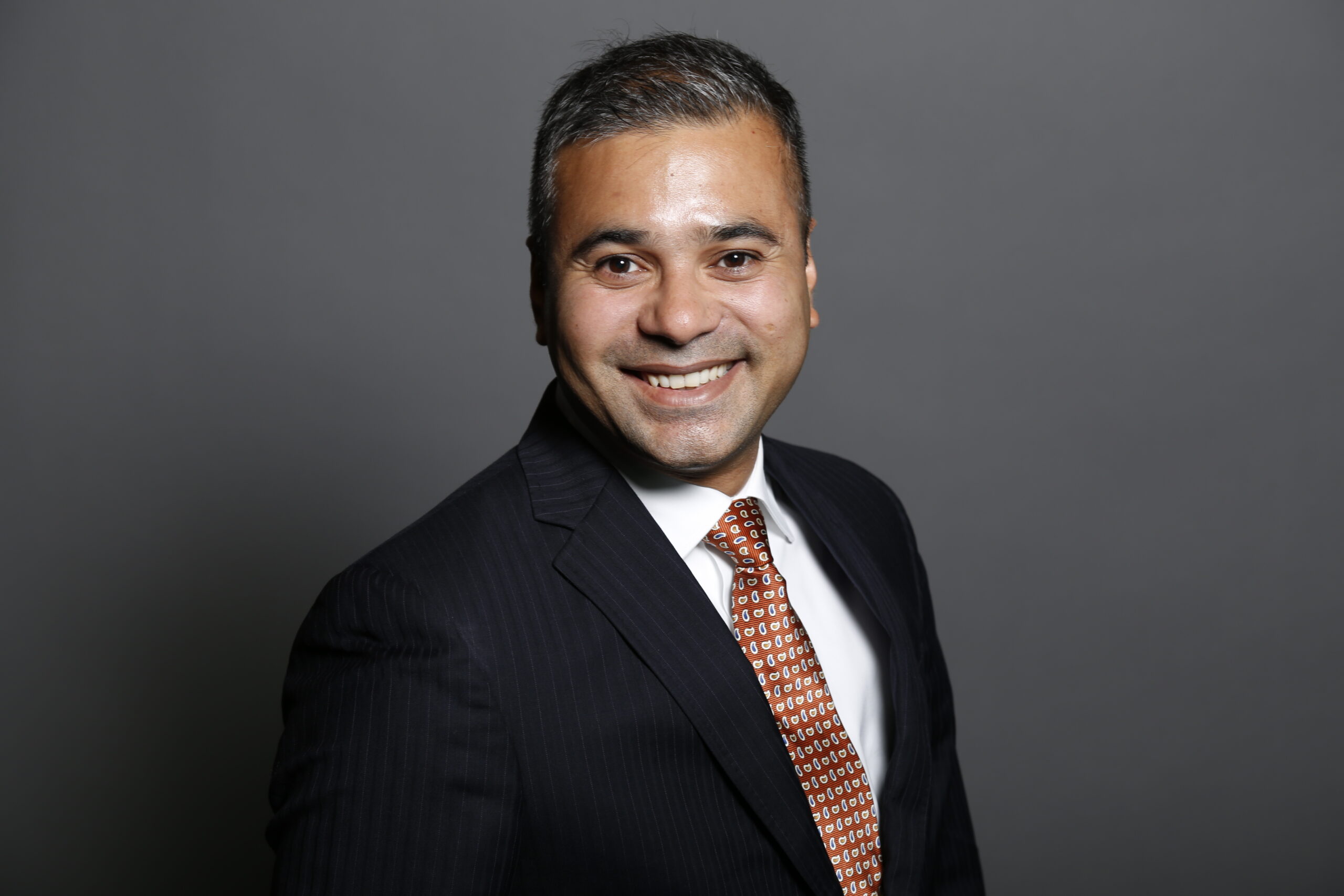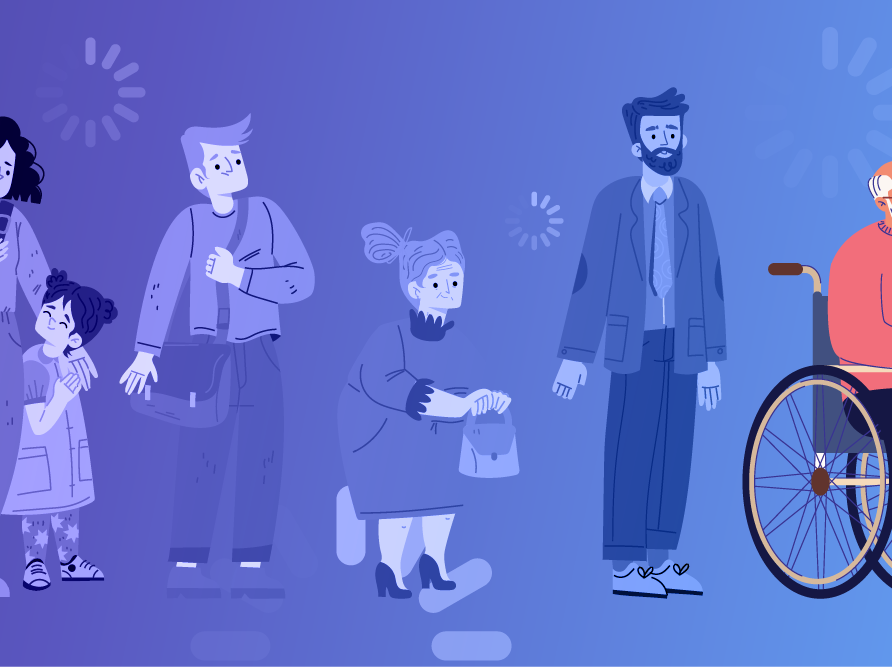Article
Are we turning the corner on monkeypox?
Monkeypox is endemic in a dozen central and west African countries, and it has been identified in several non-endemic countries since May 2022. As of November 9, more than 78,000 monkeypox cases have been reported worldwide, including more than 28,000 in the U.S.
Navigating monkeypox while COVID-19 persists has been challenging, but the outbreak may be changing course. In early August, approximately 440 cases a day were reported to the Centers for Disease Control and Prevention (CDC). By mid-October, that figure fell to approximately 65 cases.
Here are a few factors that may have contributed to the decline in monkeypox.
What is monkeypox and who is most affected?
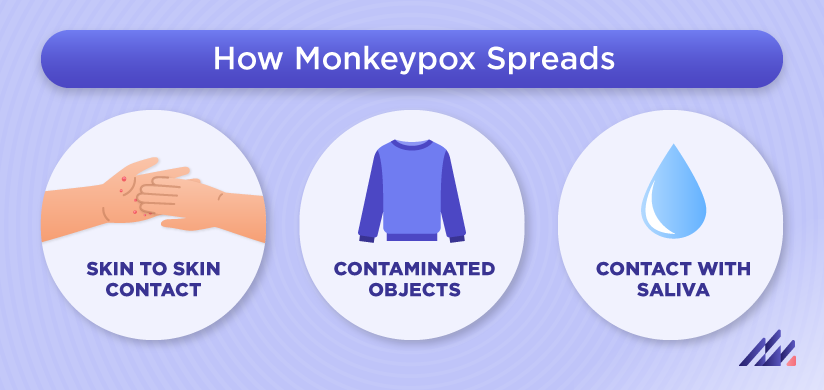 Monkeypox is a virus zoonosis, or a virus transmitted from animals to humans. It causes symptoms including fever, headache, back pain and a skin rash that is often found on the face and extremities. According to the World Health Organization (WHO), the case fatality rate in recent years has been 3–6%.
Monkeypox is a virus zoonosis, or a virus transmitted from animals to humans. It causes symptoms including fever, headache, back pain and a skin rash that is often found on the face and extremities. According to the World Health Organization (WHO), the case fatality rate in recent years has been 3–6%.
Monkeypox typically spreads through direct, prolonged contact with the skin of an infected individual. Though less common, transmission can occur by touching an object that has come in contact with a person with monkeypox. Additionally, it is possible to contract the virus through the saliva of a person with lesions in the mouth or throat. On the whole, monkeypox is significantly less transmissible than a respiratory virus like SARS-CoV-2 (the virus that causes COVID-19), which spreads efficiently through the air.
Research indicates that members of the LGBTQ community who have sex with men may be disproportionately affected by the current outbreak. A group of clinicians from 16 countries examined monkeypox cases recorded between April 27 and June 24 and the data showed that 98% of those diagnosed were gay or bisexual men, and 75% were white. In the U.S., however, non-white groups have been disproportionately affected by the virus. Specifically, 30% of reported cases have been among Hispanic men and 35% among Black men. This context is important to understand effective public health responses, rather than to create or perpetuate stigmas associated with monkeypox and the populations at increased risk for it.
What has been the response?
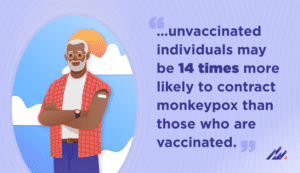 Another reason the trajectory of monkeypox may look different than that of COVID-19 is past experience dealing with the virus. For example, vaccines were already available in the U.S. (though in limited supply) to prevent its spread. Data shows that unvaccinated individuals may be 14 times more likely to contract monkeypox than those who are vaccinated. As of November 8, more than 1 million doses of the JYNNEOS vaccine have been administered.
Another reason the trajectory of monkeypox may look different than that of COVID-19 is past experience dealing with the virus. For example, vaccines were already available in the U.S. (though in limited supply) to prevent its spread. Data shows that unvaccinated individuals may be 14 times more likely to contract monkeypox than those who are vaccinated. As of November 8, more than 1 million doses of the JYNNEOS vaccine have been administered.
Individuals eligible for the vaccine include those who have been exposed to someone with a confirmed monkeypox diagnosis. Members of the LGBTQ community who have sex with men and have had more than one sex partner and/or a new diagnosis of a sexually transmitted disease are also eligible for the vaccine.
Public health agencies have also collaborated with LGBTQ organizations to share knowledge about the virus, prevention and treatment with those at greatest risk. For example, the Colorado Department of Public Health worked with local organizations to create and distribute informational flyers at Pride events in the state. San Francisco administered vaccines at street fairs well-attended by members of the LGBTQ community. Additionally, 100+ community and religious organizations signed a letter calling on Congress and the Biden Administration to allocate more funding dedicated to containment efforts.
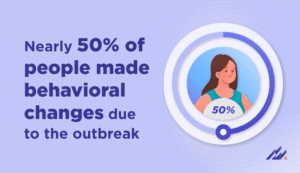 Behavior change, whether spurred by public health efforts or not, also appears to be a factor in the decline of monkeypox. In August 2022, Emory University, Johns Hopkins University and the CDC conducted a survey among cisgender gay, bisexual and other men who have sex with men in the U.S. to examine their attitudes and behaviors related to monkeypox. The study found that 48% of respondents reduced the number of their sexual partners due to the outbreak. Additionally, 50% reduced one-time sexual encounters and 50% reduced sex with partners they met on dating apps or at sex venues.
Behavior change, whether spurred by public health efforts or not, also appears to be a factor in the decline of monkeypox. In August 2022, Emory University, Johns Hopkins University and the CDC conducted a survey among cisgender gay, bisexual and other men who have sex with men in the U.S. to examine their attitudes and behaviors related to monkeypox. The study found that 48% of respondents reduced the number of their sexual partners due to the outbreak. Additionally, 50% reduced one-time sexual encounters and 50% reduced sex with partners they met on dating apps or at sex venues.
While monkeypox still remains in non-endemic countries, the decline in the number of cases is encouraging. Learn more about the current outbreak here.

